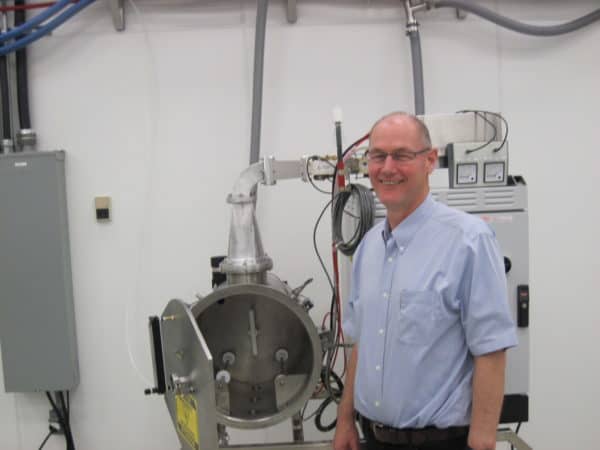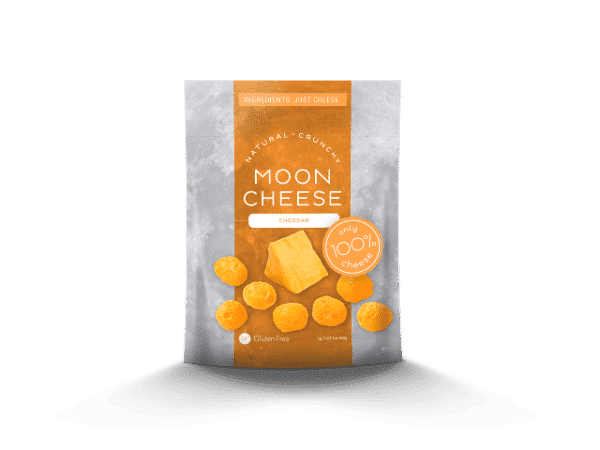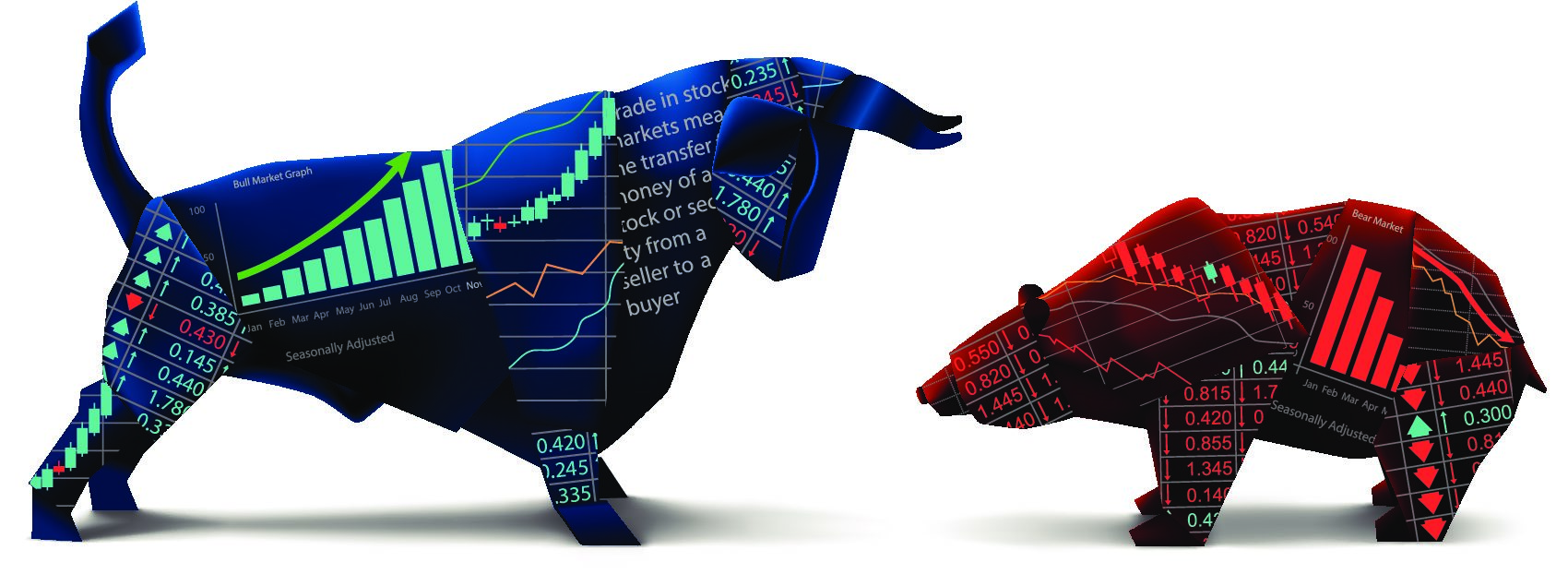
The company’s Radiant Energy Vacuum technology, developed at the University of British Columbia in the 1990’s, might be the first significant development in food drying technology in a more than a generation.
While commercialization of the science has been necessarily slow, EnWave is starting to get noticed by all the right people; the company has signed recent deals with cereal king Kellogg and Grupo Bimbo, the world’s largest bread manufacturer. These food giants, without doubt, see a day not so far in the future when the strawberries in your Special K taste better and your Wonder Bread is more nutritious. Cantech Letter’s Nick Waddell joined EnWave Chairman Tim Durance for a plant tour at the company’s R&D facility on Annacis Island in suburban Vancouver, and then sat down to discuss what’s next for EnWave.
Tim, can you circle back and tell us a bit about the history of EnWave?
EnWave Corporation started out as a series of research projects at The University of British Columbia in the food science department. I was a professor in food processing and food engineering. I started developing the basic concepts of our Radiant Energy Vacuum technology, but in order to see them translated into the industry I needed a corporate vehicle. I initially met some businessmen from Vancouver who helped set up a private company in 1996, we took that public, and the company has been developing from that time to where we are today.
Now it is 16 years later, you have a deal with Kellogg’s, with all these big food companies. It seems like you are about to take this science to the world. How does that feel?
Well, it feels pretty good. We do have two commercial deals now that are signed, one with a blueberry manufacturer in Richmond, BC and the other with Milne Fruit from the United States. Currently we are working on reaching deals with larger companies; however, they take a little longer to bring to completion, but of course the payback is much, much bigger.
I imagine that for a company as large as Kellogg’s, a one percent improvement in technology can mean millions of dollars. What, ultimately do you see as the core benefit that you would be offering a company as large as that?
In almost all cases its product improvement that they are looking for. They are looking for better flavour, better appearance and/or improved nutrition in the food products. Of course, they would like to be able to gain these improvements without spending a lot of money, but they know they have to invest appropriately to achieve their desired outcomes and they are prepared for that.
Where do you feel is, as a public company, the best use of your capital and your time? Where do you feel is the slam-dunk application for your technology, out of the gate? Do you get to pick and choose where it is applied?
We pick and choose a lot, actually. We find there is a lot of interest in these areas. Virtually all our clients have come to us. We do go to a food industry trade show once a year, where we are available, but that’s about the only promotion we do. Virtually all of the companies we are working with, and we’re working with a couple dozen, at one level or another, and maybe a dozen in a more advanced way, have come to us. These companies have their own ideas about what they are looking for. There hasn’t been many new advancements in drying technology for a long time and drying is used a lot in food as well as other industries, so they tend to get quite excited about the potential.
Let’s talk about that potential. I have seen from the plant tour we just did that there are a myriad of applications for your technology. If we are to imagine it’s twenty years from now and your technology has been successfully implemented, how is the world going to be different, how will your technology impact the world?
I think that for the high nutrition dry food products this will be the method of choice. In the snack segment in particular, there is a lot of potential there. Most currently popular snacks aren’t very healthy. There usually are very high in fat, sugar or salt or sometimes all three. But it is possible to make very attractive and delicious snacks with natural ingredients. So I think that’s one place we’ll see an impact. There are other places that are maybe not so obvious to the consumer, however.
We saw some strawberries on the tour that you mentioned actually taste better than current methods. Can we look forward to them tasting better in Special K, for instance?
I would say the biggest plus we bring to products is better flavour. We kind of push the nutritional advantages, because that was where we started and what first got us excited about the technology and it does bring people to us, but I think the flavour is what keeps the bigger customers attention.
When I first heard of EnWave my mind leapt to international aid to the third world.
Well, eventually it may be a way to dry products in those parts of the world, because often they produce good products but can’t get them to market. But at this stage we’re focused on North America and Europe where new technologies can be more easily developed and commercialized. Eventually, yes, I think it will be widely used around the world, and for that reason we patented our REV technology around the world.
Many investors are hyper-aware of patents right now. You have some interesting ones.
We have fifteen patent families that are patented in throughout the world. About half of them have been granted at this point. Corporately, we put a lot of effort into the development of our patents, because we license our technology exclusively to our customers. It’s really the patents that bring them to us. It’s perhaps not obvious, but it actually makes it easier for a customer to invest in a technology if they know they are going to have some ownership of it, even if it’s in a limited area because they don’t have to worry about their competitor two years down the road jumping on the bandwagon.
Perhaps this is a nice lead in to talk about how you intend to make money. It is through licensing agreements?
Yes, but we also supply equipment, usually through third parties, that we develop, design and patent. Going forward, the bulk of our revenue will be through royalties on products. Usually when we’re working with a company it starts with an R&D project, in which we write an R&D agreement with the partner company and within that agreement there would be milestones and the range of royalties that they might be expected to pay. Then what we do is give them the option to license the technology for the category that they are interested in.
How do you calculate that payment?
It’s based on product sales. There is a range for the royalty payment depending on the product, and its really based upon the value we would bring to it.
So there would be instances where you technology is more highly related to the value of the product than others?
Yes, exactly. It comes down to advantage. If you can own the advantage for a particular product it provides lasting value. In those cases the companies should be happy to pay royalties for that advantage.
What are some of the applications of EnWave technology that you are most excited about?
I think the ones that are going to come first are the food ingredients, because those are the easiest to market. If you have a better quality food ingredient that will improve an existing product all you have to do is convince on person to buy that and you’re in business. An example of that would be dried blueberries, dried vegetable or fruit powders that are used in bakery products and energy bars, things like that. Those can be very large categories. The ones that probably get the most public visibility would be stand-alone products, but to produce a new line of snack products, get appropriate distribution and recognition takes years, so that’s a longer term return. We are mainly doing product development with nutraREV™, our drying technology that we are most advanced with and have the most commercial interest in at this time. All our drying technologies end with the suffix REV, which stands for Radiant Energy Vacuum. nutraREV™ is for snack products, pieces of food, basically. We have powderREV™ for producing powders, we have quantaREV™, which is our larger scale design, but is just a pilot-scale project at this time. Then we have bioREV™ and freezeREV™ in the pharmaceutical area.
So you have accomplished a lot. Patented technology, major partnerships. You are looking out onto a market that is huge, but no real revenue yet. When can investors start to look for you to produce revenue?
It’s hard for us to put a timeline on it at this point. We’re pretty well financed now, so we have some time. We expect some appreciation of our stock’s value as our partnerships advance, but it’s going to be some time before we are generating revenue with our larger partners.
Up until this point you have been R&D focused. Are you prepared for the transition to commercialization?
That is a huge concern and one that we have tackled over the years. Our approach has been to put as much of that on other companies as possible. So we don’t, for instance, try to develop food products and then go out and sell them. We work with companies to develop the products they need. We will help them, but they still do most of the product development work. The upside is we don’t need a huge staff for that. In the pharmaceutical area we do the same thing. We understand our drying technology and we work with companies that understand their science, and they provide the lion’s share of the work there. We focus a lot on the patents and the intellectual property development and make sure things are well protected. In terms of the engineering we have a good research engineering group who develop prototypes and in some cases will build the first commercial machine for a client, but we have no intention of being a major machine builder. The company we are working with most closely is Hans Binder in Germany. We have a partnership with them and we work with other equipment manufacturers as well. We don’t really want or require the larger workforce that is necessary to build and service the kind of equipment we need.
So what can EnWave investors and those looking at the company look forward to in the next year?
We are hoping to sign between seven and eight R&D agreements. We want to complete the commercial deal we announced with Milne Fruit earlier in the year. The equipment is to be delivered there before the end of this year. That’s a commercial deal, we’ll get royalties from that when they start production. We have the R&D and license option in place with Nestle, with Group Bimbo in Mexico, with Grimmway Farms in California, with Kelloggs and with Danisco for bacterial cultures. We’re trying to add to those, and we’re getting close. Each of our partnerships is someone we have identified as a leader in a particular global market segment. Our agreement with Kellogg’s is exclusive to cereals and cereal bars, a segment in which they are dominant. And that’s really our goal going forward; to work with companies that have between 25-30% market share in a specific category.
_____________________________________________________________________
______________________________________________________________________
Leave a Reply
You must be logged in to post a comment.





 Share
Share Tweet
Tweet Share
Share




Comment